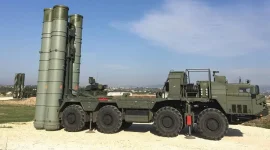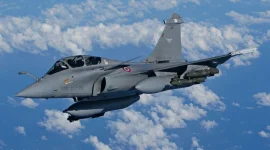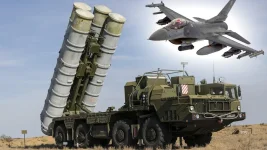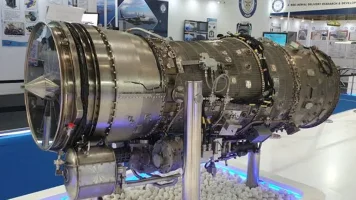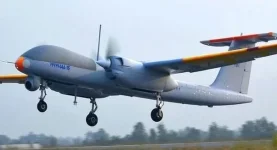- Views: 2K
- Replies: 6
In a major strategic announcement during his Independence Day address from the Red Fort on August 15, 2025, Prime Minister Narendra Modi unveiled the Sudarshan Chakra Mission.
This ambitious initiative aims to develop a multi-layered, indigenous system by 2035 that combines both offensive and defensive capabilities to secure India against emerging threats.
Named after the legendary discus of Lord Krishna, which was known for its precision and unfailing return, the system is designed to be a comprehensive national security shield.
It represents a significant leap beyond conventional air defence systems by integrating counter-strike functionalities, aiming to redefine India's strategic posture in the region.
A Hybrid System Beyond Global Counterparts
The conceptual framework for the Sudarshan Chakra sets it apart from established air defence systems globally.While systems like Israel’s renowned Iron Dome, operational since 2011, have proven highly effective at intercepting short-range rockets with over a 90% success rate, their primary role is defensive.
Similarly, the proposed $175 billion Golden Dome initiative in the United States is designed to counter next-generation missile threats but remains focused on interception.
India's Sudarshan Chakra, however, is envisioned with a dual purpose.
According to officials, it will not only neutralize a wide range of aerial threats—from drones and aircraft to ballistic and hypersonic missiles—but will also be capable of launching precise, offensive strikes against ground targets.
This hybrid approach, combining a protective shield with a retaliatory sword, is what makes the mission uniquely ambitious.
Advanced Defensive and Offensive Capabilities
The Sudarshan Chakra is planned as a multi-layered, AI-powered network that integrates cutting-edge technology across air, land, and sea domains.The project is expected to be more complex than Project Kusha, India’s indigenous long-range air defence system comparable to Russia’s S-500, which is scheduled for deployment around 2028-2029.
Key features of the system are expected to include:
- Layered Air Defence: The system will create a three-tiered protective zone using satellite surveillance, Airborne Warning and Control Systems (AWACS), and advanced long-range radars. It will build upon the capabilities of existing platforms like the S-400 (known as Sudarshan in Indian service) and integrate future assets from Project Kusha to engage multiple targets simultaneously at extended ranges. Electronic warfare suites will also be used to jam and disable enemy systems.
- Precision Strike Power: A core element of the mission is the ability to conduct what the Prime Minister described as “targeted, precise action” against adversaries. This involves integrating precision-guided munitions, such as the Guided Pinaka rocket system, which has a reported accuracy of within a few metres. The system will be capable of striking high-value enemy assets like command centres, airbases, and terror infrastructure. The Defence Research and Development Organisation’s (DRDO) Centre for Artificial Intelligence and Robotics (CAIR) will likely develop AI algorithms to enable autonomous and rapid target selection.
- Robust Cyber Defence: In a move to address modern warfare challenges, the Sudarshan Chakra will also incorporate a strong cyber defence component. Unlike traditional systems focused solely on physical threats, it will be designed to protect critical national infrastructure, including power grids and communication networks, from cyberattacks like hacking and phishing.
Integration for Multi-Domain Operations
The success of this visionary project will depend on its seamless integration with India's existing and future military assets.The system will be built upon the foundation of the Integrated Air Command and Control System (IACCS), which coordinates data from all military radars.
Furthermore, it will synergise with the indigenously developed Akash series of missiles, the upcoming Advanced Medium Combat Aircraft (AMCA) stealth fighter, and advanced naval assets like anti-submarine missiles.
This integrated approach aims to create a cohesive network capable of comprehensive multi-domain operations, ensuring India’s sovereignty and establishing a formidable deterrent for decades to come.

